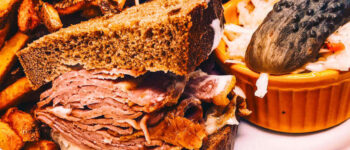Galangal and ginger are arguably some of the most confused and conflated ingredients. One notable reason for this is the way galangal is often coined as ‘Thai ginger’. Understandably, because they are so similar in appearance. However, we can’t stress enough how much these two ingredients should not be confused and most certainly not used interchangeably. You see, while galangal and ginger are a similar species of the same family of plants (rhizomes), there are some distinct reasons why these ingredients are so different and in this brief blog we’ll explain everything down to help you understand.
Differences in Appearance
At first glance or in a flash, anyone might mistake galangal for ginger and vice versa. However, there are some key differences in their appearance which can help you distinguish between them.
See more : Drying
Galangal has a smooth pale, almost off-white skin with a few areas of a blush rose tone. This blush rose tone is usually located where a galangal plant stem would have previously grown. The flesh inside galangal is also a pale off-white colour. On the other hand ginger is a darker, dusty brown colour and slightly more textured appearance of the skin with a yellow toned flesh. You can also note that while the skin on galangal is quite shiny and reflective, the skin on ginger is more flat and matte. These are the key differences in appearance, although these elements have little influence on how the ingredients are used in cooking.
The more important factors in relation to appearance would be the texture of the flesh of the ingredients. Ironically, while galangal seemingly has a ‘softer’ appearance, it has a much tougher flesh in comparison to ginger. So while ginger can be grated, galangal needs to be chopped or thinly sliced into the appropriate portions before cooking.
Differences in Taste
Ultimately, taste is the biggest factor that makes galangal and ginger so different (and hence why they can’t be used interchangeably). You should also note that galangal in Southeast Asian countries like Thailand, Indonesia and Malaysia; while ginger is used all over the world and used commonly in the west.
See more : What Is Oxtail Really Made Of?
So what exactly do galangal and giver taste like? And what do they add to cooking? Galangal has a deep earthy taste with hints of citrus flavours (although not in a fruity way). These flavours are what make it such a great addition to Thai massaman curry and rendang curry recipes. Ginger on the other hand has a unique spicy, peppery flavour with a subtle underlying tone of sweetness. This peppery characteristic of ginger is unmistakably pungent and identifiable in almost any recipe it’s used, from an authentic Chinese stir fry to a classic Jamaican ginger cake.
Different Uses in Food & Cooking
With the different flavours they have, you can imagine just how differently each ingredient is used when it comes to cooking. Ginger is the more versatile ingredient of the two and compliments a wide range of ingredients and styles of cooking. After peeling and grating, ginger can be added to soups, stir fries, marinades, sauces, glazes, baked goods and even drinks (teas and cocktails)! That same delicious peppery ginger taste can be enjoyed in either a Vietnamese Pho or Southeast Asian ginger milk tea.
Galangal is not quite as versatile as ginger and is mostly used in Southeast Asian recipes for savoury recipes. Despite this, galangal is definitely one of 15 essential ingredients for Thai cuisine and making a wide variety of Thai recipes. After being thinly sliced, galangal makes a wonderful addition of curries like Thai fish curry, Indonesian Satay, noodle dishes, stir fries, Malaysian Laksa and Thai Tom Kha soup.
Nigel Gildon editor:Nigel Gildon is the editor of Chef Wayne’s Big Mamou: Chef Wayne’s Big Mamou. He has worked in the publishing industry for many years and has a passion for helping new authors get their work into the hands of readers. 63 Liberty Street * Springfield, MA 01003






